
Vermont Research News: Housing, maps, ticks and more…
View on VT Digger
View this email in your browser

Vermont Wages Increase
Vermont has the lowest unemployment rate in the U.S. at 2.4 percent (tied with three other states), according to new data from the Public Assets Institute. The report also found that Vermont wages grew faster than any state in New England, except New Hampshire in the last quarter. Yet the state still has the second lowest average wage in New England, at $19.70. Half of workers earn more than the median wage and half earn less.
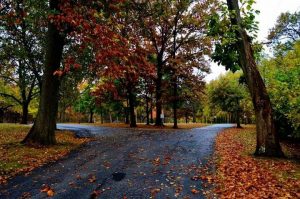
Burlington’s climate sister city – Taylorville, Illinois
Sixty years from now Burlington’s climate will mirror Taylorville, Illinois according to astudy recently reported by Nature Communications. Researchers used a statistical technique called climate analog mapping to find 2080 climate shift “twins” for 540 American cities. They created an interactive map that indicates East Coast cities will generally grow warmer and wetter—the weather in Boston, for example, will be similar to Rosedale, Maryland . Access the map here.

Self-monitoring to lose weight
Many people want to lose weight, but are turned off by the idea of documenting their meal and calorie intake – yet this approach is highly effective. A group of Vermont researchers studied the time commitment of self-monitoring by analyzing the data accrued by 142 participants in an online behavioral weight loss program. The team found that, by the sixth month of the study, those who had lost 10 percent of their body weight spent just 14.6 minutes on self-monitoring each day.
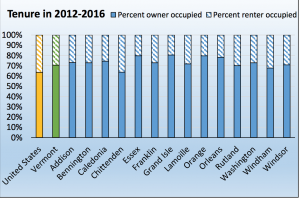
Housing affordability
More than one-quarter (28.3) of Vermont households spent 35% or more of their income on housing costs in 2016, according to a new report from the Vermont State Data Center.This is a slight decrease from 29.5% in 2011, but still higher than 2000 (21.4%). Why is this significant? According to the report, one common way to identify areas where housing costs are too high, is by the percent of households spending at least 35% of their income on housing. To learn more about the Vermont housing costs, check out this episode of VPR’s Brave Little State.
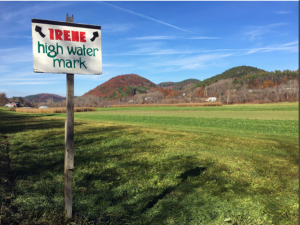
River bed erosion
River bed erosion and flooding of otherwise dry land are still the most significant natural hazards in Vermont, according to the 2018 State Hazard Mitigation Plan. The plan, produced by theVermont Division of Emergency Management, outlines the natural hazards facing Vermont, the state’s existing hazard mitigation capabilities, and the strategies that Vermont can implement moving forward to further protect against natural hazards.

Student research at UVM
More than 400 UVM students will showcase their research at the Student Research Conference on April 17 from 9 a.m. to 5 p.m. at UVM’s Dudley H. Davis Center. The public is invited to see the posters and chat with the student researchers. Vermont projects include: Kati Gallagher’s research on the Vermont Happiness Survey; Madeline Hayes’ reportlooking at the use of unmanned aircraft systems and invasive species and Emma Janine Gianoplus’ Research examines the resources available to refugees in Chittenden County and whether UVM seniors are planning to stay in Vermont or leave the state, Read the full list of Student Research Conference presentations here.
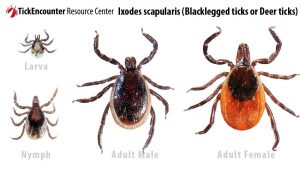
Tick diets
As tick season gets underway, new research from Middlebury College looks at the role tick diets may play in the transmission of Lyme disease. The study looked at the impact of different host species, including raccoons, opossums, skunks, and squirrels, on the microbiome of Ixodes scapularis, the tick species known for its role in spreading Lyme disease in the eastern U.S.

Face blindness
An estimated 1 in 50 people are affected by prosopagnosia, or face blindness: trouble recognizing friends, family, or even themselves. Evidence suggests that brain stimulation can help improve cognitive and perceptual abilities, and Dartmouth researchers Bradley Duchaine, wondered if a similar process—transcranial random noise stimulation—might help those with prosopagnosia have better face memory performance. See the results here “Lessons Learnt From Mixed Findings” and listen to a recent VPR interview here.
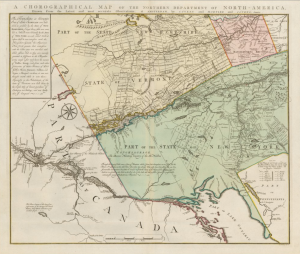
First map to name Vermont
Librarians from UVM’s Silver Special Collections library assembled a collection of maps for display at The Lake Between/Le Lac Qui Nous Unit conference. The exhibit featured maps of the Lake Champlain area dating from circa 1683 up until 2016. One map on display, titled “Chorographical Map of the Northern Department of North America” and dated 1778 (printed 1780), is the first printed map to name the state of Vermont.

Center for Research on Vermont – Researchers Wanted!
The Center’s mission is to make Vermont research accessible and to engage students and scholars in the “laboratory” of Vermont. Join us for our annual dinner & reception on the top of the Waterman Building looking out over Lake Champlain May 9 starting at 6:00.Register here. Are you a Vermont researcher? Apply to become a Center member here. Apply here. Have suggestions for the newsletter or questions – submit them here.
New books & art

New York Times bestselling authorMaureen Johnson returns to Vermont’s Ellingham Academy for the second installment of her Truly Devious young adult series, titled The Vanishing Stair. The private academy was rocked shortly after its opening when the wife and daughter of the school’s founder were kidnapped. Shortly after, a mysterious riddle was recovered detailing the gruesome methods of the murder and signed “Truly, Devious.” The series continues to follow the bright young true crime fanatic Stevie Bell, who is a student at the private academy and works tirelessly to solve the cold case.

The ONE Perspective Photo Exhibit is spotlighting an exhibit in honor of Fair Housing Month on the second and third floors of ONE Community Center,featuring over 1,000 photos taken by photographer Megan Humphrey all around Burlington’s most diverse community, the Old North End. The exhibit will be on display until April 30th.

